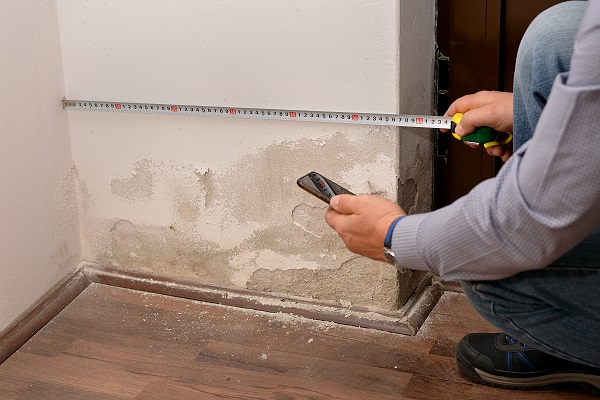Do's & Don'ts of Water Damage.
Do's & Don'ts of Water Damage.
Blog Article
Listed here down the page you will find lots of sensible data in relation to What You Can Do At Home To Prevent Fire And Water Damage.

Water provides life, but water invasion on some components where it's not intended to be can result in damage as well as inconvenience. In addition, homes with water damages smell stuffy and old.
Water can originate from numerous sources like hurricanes, floodings, burst pipes, leakages, as well as drain concerns. If you have water damage, it's far better to have a working understanding of safety and security preventative measures. Right here are a couple of guidelines on exactly how to deal with water damage.
Do Prioritize Home Insurance Coverage Coverage
Seasonal water damage can originate from floodings, seasonal rainfalls, and wind. There is also an incident of an abrupt flood, whether it originated from a defective pipe that instantly breaks right into your house. To safeguard your residence, get home insurance that covers both disasters such as natural tragedies, and also emergency situations like busted plumbing.
Don't Fail To Remember to Shut Off Utilities
When disaster strikes and you remain in a flood-prone area, turn off the main electrical circuit. Turning off the power stops
When water comes in as water serves as a conductor, electric shocks. Don't fail to remember to shut off the primary water line shutoff as a means to avoid more damages.
Maintain your furnishings secure as they can relocate around as well as trigger extra damage if the floodwaters are getting high.
Do Keep Proactive and also Heed Weather Condition Alerts
If you live in an area afflicted by floods, stay proactive as well as ready at all times. Listen to the information and also discharge warnings if you live near a body of water like a creek, lake, or river .
Do Not Overlook the Roofing System
Your roofer needs to take treatment of the defective rain gutters or any kind of various other indications of damage or weakening. An inspection will certainly protect against water from moving down your walls and soaking your ceiling.
Do Take Note Of Little Leaks
A burst pipeline doesn't take place in a vacuum or over night. There are red flags that can attract your attention and also indicate to you some weakened pipelines in your home. Indicators of red flags in your pipes consist of bubbling paint, peeling off wallpaper, water touches, water discolorations, or leaking sounds behind the wall surfaces. There are indicators that the pipe will break. If you see these signs, don't await an escalation. Repair and also check your plumbing repaired prior to it leads to large damages to your home, finances, and also a personal headache.
Don't Panic in Case of a Burst Pipe
Timing is vital when it comes to water damages. If a pipe ruptureds in your house, right away shut off your primary water valve to cut off the resource as well as avoid more damage. Call a reliable water damage reconstruction specialist for support.
Water gives life, however water breach on some components where it's not intended to be can result in damage as well as hassle. In enhancement, homes with water damages smell old and stuffy.
Seasonal water damage can come from floods, seasonal rains, as well as wind. Signs of red flags in your pipes include gurgling paint, peeling off wallpaper, water streaks, water spots, or leaking noises behind the wall surfaces. If a pipe bursts in your home, right away closed off your main water shutoff to reduce off the source and protect against even more damages.
Some Do's & Don't When Dealing with a Water Damage
DO:
Make sure the water source has been eliminated. Contact a plumber if needed. Turn off circuit breakers supplying electricity to wet areas and unplug any electronics that are on wet carpet or surfaces Remove small furniture items Remove as much excess water as possible by mopping or blotting; Use WHITE towels to blot wet carpeting Wipe water from wooden furniture after removing anything on it Remove and prop up wet upholstery cushions for even drying (check for any bleeding) Pin up curtains or furniture skirts if needed Place aluminum foil, saucers or wood blocks between furniture legs and wet carpet Turn on air conditioning for maximum drying in winter and open windows in the summer Open any drawers and cabinets affected for complete drying but do not force them open Remove any valuable art objects or paintings to a safe, dry place Open any suitcases or luggage that may have been affected to dry, preferably in sunlight Hang any fur or leather goods to dry at room temperature Punch small holes in sagging ceilings to relieve trapped water (don't forget to place pans beneath!); however, if the ceiling is sagging extremely low, stay out of the room and we'll take care of it DO NOT:
Leave wet fabrics in place; dry them as soon as possible Leave books, magazines or any other colored items on wet carpets or floor Use your household vacuum to remove water Use TV's or other electronics/appliances while standing on wet carpets or floors; especially not on wet concrete floors Turn on ceiling fixtures if the ceiling is wet Turn your heat up, unless instructed otherwise

We were made aware of that report on Preventing Fires and Water Damage In Your Home from an acquaintance on another web blog. So long as you liked our page kindly do not forget to share it. Thank you for your time. Visit us again soon.
Report this page